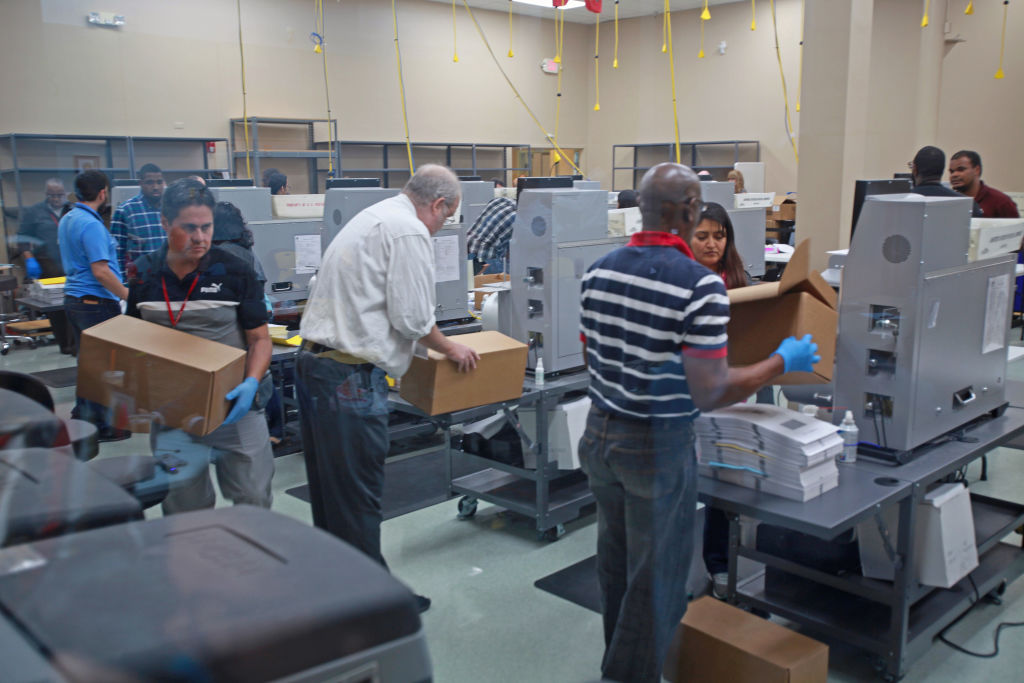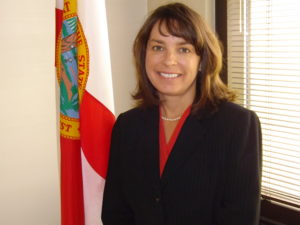
 As you probably know, Florida law required a machine recount in the races for Governor, Senate and Agriculture Commissioner, because there was less than a 0.5 percent difference in the statewide vote tallies for each of those races.
As you probably know, Florida law required a machine recount in the races for Governor, Senate and Agriculture Commissioner, because there was less than a 0.5 percent difference in the statewide vote tallies for each of those races.
After the machine recount, there was a manual recount for both the Senate and Commissioner of Agriculture, because the statewide vote tally differences in those races were less than 0.25 percent.
Both the machine and manual recounts were mandated by Florida statute.
You might have wondered why we would need a manual recount in Florida, or whether such a recount could have possibly altered the outcome. The reason we needed the recounts is simple: the machines could not read tens of thousands of legitimate votes.
To further clarify, the manual recounts only included those votes classified, after the machine count, as either “undervotes,” which is where the machine recorded no vote, or “overvotes,” which is where the machine recorded a vote for two or more candidates.
Put differently, Florida statute only requires a manual recount of those ballots for which the machine could not detect any valid vote. In thousands of instances, the voters made selections — but we couldn’t learn their choices without counting by hand.
So, the purpose of the manual recount was to determine, for those votes the machine couldn’t read, whether there was any evidence of voter intent on the ballots themselves. Only human eyes could possibly make such a determination.
You might have wondered: if the machine couldn’t record an answer, how could humans come to any different conclusion?
The answer is pretty simple, once you understand what voting machines can’t detect.
Florida uses a couple of different types of ballots. One is where the voter darkens an oval beside a candidate name. Another is an “arrow and tail,” where a voter draws a line, literally between an arrow and tail. To keep things simple, for this article, we’ll just use the oval darkening ballots as examples.
But there are similar issues with the arrow and tail ballots.
To be an undervote, the machine must not have recorded any vote for a particular race. So that would mean that the voter didn’t sufficiently darken the oval. To be an overvote, the machine would have recorded two or more selections, meaning the voter darkened two or more selections.
In the case of an undervote, when a real person looks at a ballot, she might see different markings, which a machine couldn’t detect, but that clearly demonstrate that particular voter’s intent. For example, instead of darkening the oval, the voter might have circled or underlined the candidate’s name. Or he might have written “YES,” or “this one,” next to a candidate name, or circled the candidate’s party. The voter also might have used a check mark, asterisk, cross, plus sign or star, instead of darkening the oval. Or the voter might have darkened only part of the oval, or just put a pinpoint mark in the center of the oval. The machine could easily miss all of those markings, despite there being clear evidence of voter intent, upon visual (manual) inspection.
In the case of an overvote (where the machine detected more than one selection), a manual reviewer might see that a voter made a mistake, and crossed through his undesired choice, or used words to clarify what he intended (for example, “not this one,” or “this is my choice”).
Or the voter might have made a mistake by darkening both ovals, but then circled or underlined, the candidate or party that she really wanted to select.
In each of those situations, if someone actually looked at the ballot, the voter’s intent would be clear, yet the machine could not have counted those votes.
Essentially, the manual recounts exist because there are limits to what a machine can discern about voter intent. Yet those votes must still be counted in close race situations — to be sure that every vote is counted, whenever it might make any difference in the outcome. Indeed, immediately before the 2018 manual recounts, the outcomes were still totally unknown, because potentially thousands of votes had yet to even be considered.
In terms of numbers, you might wonder whether there was ever any chance that the manual recount could have made a difference. The answer is a resounding yes.
As a matter of fact, Florida law only allows a manual recount whenever there are enough undervotes and overvotes to change the outcome. Here’s what the statute says:
“ … [A] manual recount of the overvotes and undervotes cast in the entire geographic jurisdiction of such office or ballot measure shall be ordered unless: … (b) [t]he number of overvotes and undervotes is fewer than the number of votes needed to change the outcome of the election.”
Florida Statute 102.166 (1) (b) (emphasis added).
Put simply, if there wouldn’t have been enough overvotes and undervotes to change the outcome, then, by Florida law, the manual recount would never have taken place.
So, what were the numbers, before Florida’s 2018 midterm election manual recount?
As you probably know, before the manual recount, Bill Nelson was 12,603 votes behind Rick Scott, in the race for United States Senate. And, roughly speaking, the electorate was divided almost evenly (50/50).
Below are some of the estimated or actual overvote and undervote totals, after the machine recounts, for some of Florida’s larger counties, in the U.S. Senate race (we have 67 counties, and all of them had some overvotes and undervotes; these are numbers from counties that had more than 500):
Collier: 1,089 (actual)
Lake: 1,010 (actual)
Palm Beach: 4,709 (estimated)
Alachua: 798 (actual)
Marion: 1,267 (actual)
Broward: 30-35,000* (estimated)
Miami-Dade: 10,041 (actual)
Leon: 940 (actual)
Manatee: 1,164 (actual)
Pasco: 1,798 (actual)
Polk: 1,993 (actual)
Santa Rosa: 527 (actual)
Orange: 3,227 (actual)
Citrus: 570 (actual)
St. Lucie: 1,171 (actual)
Volusia: 1,772 (actual)
Lee: 2,313 (estimated)
Escambia: 1,134 (actual)
Hernando: 711 (actual)
Hillsborough: 4,350 (actual)
Pinellas: 3,320 (actual)
Sarasota: 1,885 (actual)
Seminole: 1,527 (actual)
St. Johns: 738 (actual)
Duval: 2,519 (actual)
Martin: 897 (actual)
Brevard: 1,871 (actual)
Okaloosa: 589 (actual)
Osceola: 784 (actual)
Charlotte: 1,083 (actual)
*In Broward county, this number is not clear from county election office sources. But the estimated largest number in Broward county was most likely due to faulty ballot design, placing the vote for Senate beneath vertical instructions, against recommended ballot design guidelines.
The bottom line is that the statewide total number of overvotes and undervotes, before the manual recount started, was almost one hundred thousand votes, far more than enough to completely change the outcome. As I mentioned via Facebook video the morning, I arrived to make legal arguments before the canvassing board in Orange County (although the count finished before my shift started), in my opinion, we were starting the day without any possible idea what the outcome might be.
So, the next time Florida is faced with a recount, regardless of your party affiliation, you can rest assured that there is a very good reason for having them.
Now if we can just get our ballots properly designed, and machines to work, we’ll be in good shape.
___
Tina Willis Law is a serious injury, accident & wrongful death law firm based in Orlando. Willis was selected as a lead volunteer lawyer for the Bill Nelson campaign, to argue individual ballots before the canvassing board in Orange County.
Willis can be reached at: 390 N. Orange Avenue, Orlando, Florida, 32801, (407) 803-2139.



